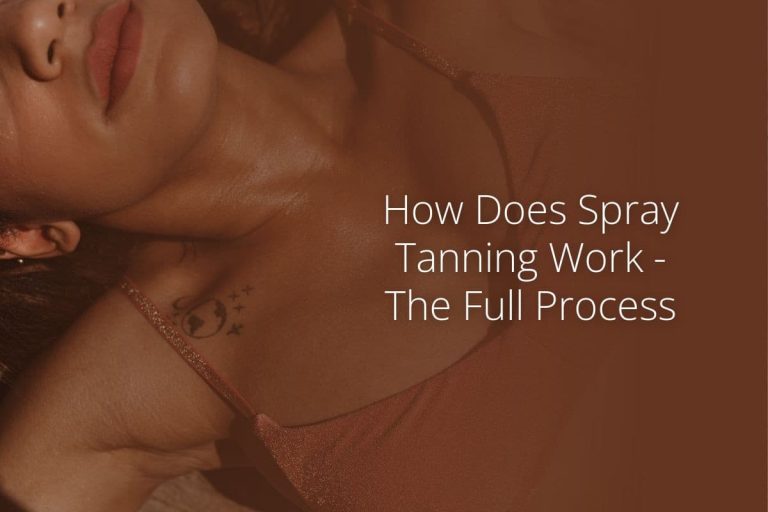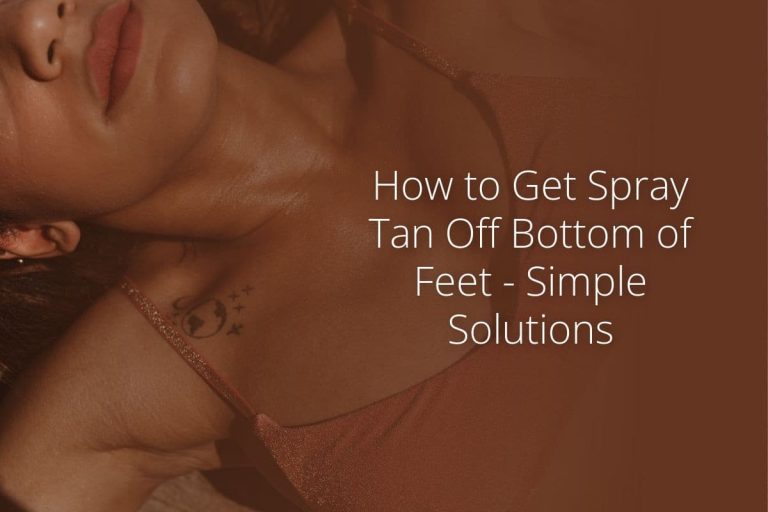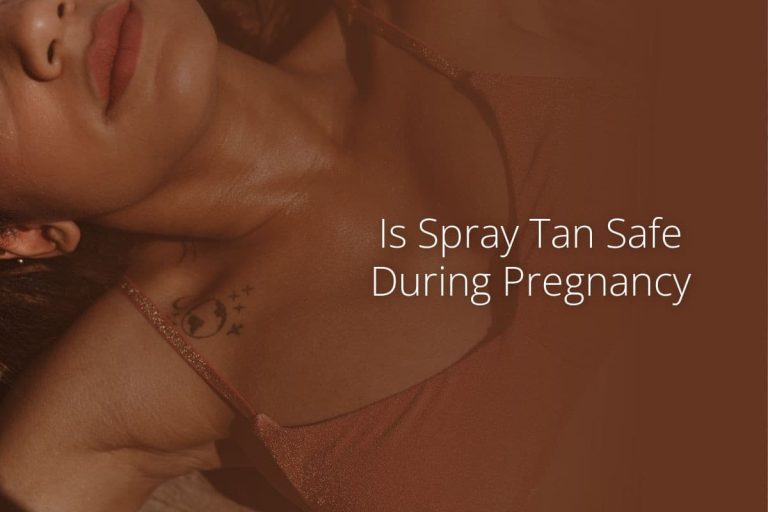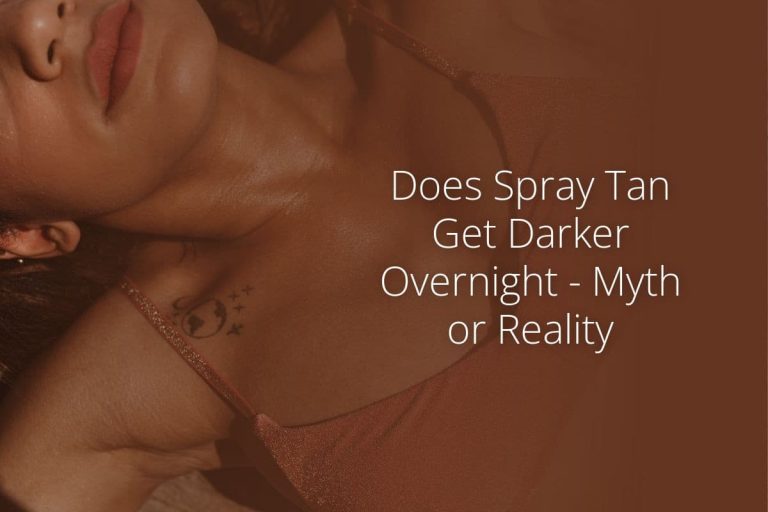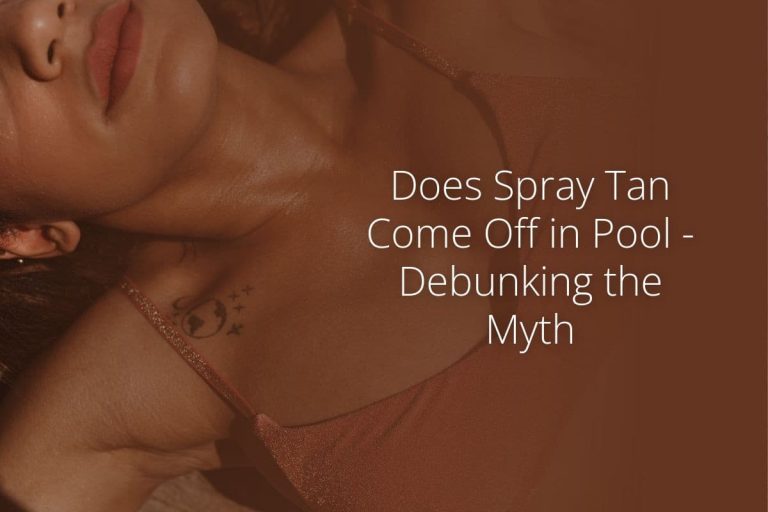
A bronzed, sun-kissed glow can make you look healthier and feel more confident, but with the risks associated with sun exposure, many people turn to alternatives like spray tans or self-tanners. One common question that arises when deciding between these two options is which one will last longer.
Generally, both spray tans and self-tanners tend to last about the same length of time, typically around 5 to 10 days. This can vary based on several factors such as the quality of the product, how well your skin was prepped before application, and how diligently you maintain it afterward. However, it’s important to note that a professionally applied spray tan might have a slight edge in terms of longevity due to the expertise involved in application.
There’s more to consider than just longevity when deciding between a spray tan or self-tanner. Things like your skin type, budget, convenience, and desired shade can also play significant roles in your decision. We will be further exploring these aspects, so stay tuned if you’re interested in understanding more about these tanning alternatives and how to get the best results from them. It’s time to get that perfect glow safely and effectively!
Pros and Cons of Professional Spray Tans
Professional spray tanning products, done by a skilled spray tan artist, offer several advantages over self-tanners. The use of high-quality tanning solution ensures a flawless and natural-looking tan, while the convenience of tanning booths allows for a quick and efficient application process. Let’s take a look at the pros and cons of opting for a professional spray tan versus using self tanning products like self tanning lotions or home self tanning solutions.
- Even and Flawless Tan: One of the main benefits of using professional tanning products or self tanning lotions is the assurance of an even and flawless result. The expertise of a trained spray tan artist ensures that every part of your body receives an equal amount of color, avoiding streaks or patchiness. Self tanning lotions and tanning products are not as effective as a professional solution.
- Longer-lasting Tanning Results: Compared to self-tanners, professional spray tans provide a solution that tends to last longer. The specialized self tanning lotions used in professional salons and spray tanning booths are formulated to provide a long-lasting sunless tan, allowing you to enjoy your looking tan for an extended period.
- Costlier Option: While professional tanning sprays offer superior tanning results, they come at a higher cost compared to self-tanners. When choosing this option at a spray tanning salon, you’ll need to consider the additional expense of using spray tanning booths and a spray gun for a sunless tan.
- Appointment Scheduling: Getting a professional self tanning spray tan requires scheduling self tanning appointments in advance. Unlike self-tanners that can be applied whenever convenient, you’ll need to plan your visit to the salon’s spray tanning booths according to their availability.
Drawbacks of Spray Tanning and Self-Tanning
Uneven Color and Streaks
Self-tanners applied in spray tanning booths have the potential to leave streaks or result in uneven coloration if not properly applied with a spray gun. When using spray tanning or self tanning products, it’s important to apply them carefully with a spray gun, ensuring an even coverage across the skin. Otherwise, you might end up with unsightly patches that scream “fake spray tanning!”
Patchy Fading
Spray tans, also known as self tanning, can fade unevenly over time. This means you may find yourself with areas that are lighter or darker than others as your spray tanning gradually fades away. Nobody wants a blotchy complexion!
Unnatural Results
Whether you opt for tanning with a self-tanner or a spray tan, both methods carry the risk of an unnatural-looking tan if not applied properly. Picture orange palms or streaky legs that resemble zebra stripes after using spray tanning or self tanning products – definitely not the sunless tan look we’re going for.
To make matters worse, certain areas of our bodies tend to absorb more self tanning product than others during spray tanning, resulting in an uneven sunless tan. Elbows, knees, and ankles often turn out darker with self tanning, spray tanning, or sunless tan due to their rougher texture or drier skin. These telltale signs can instantly give away our secret tanning method.
While spray tans provide convenience by avoiding harmful UV rays from tanning beds or booths, they come with their own set of challenges. Sweating immediately after spray tanning or self tanning can cause unwanted streaks or smudging. Self-tanners, including spray tanning, may stain clothing and bedding if not given enough time to dry before getting dressed.
Comparing Longevity: Spray Tan vs. Self Tanner
Spray tans and self-tanners both offer a bronzed glow, but how long do they actually last for tanning? Let’s compare the longevity of these two popular options:
- Spray tans, also known as self tanning, typically provide 5 to 10 days of vibrant color before gradually fading away. With just one session of self tanning or spray tanning, you can enjoy a sun-kissed look for up to a week and a half.
- On the other hand, spray tanning self-tanners generally offer around 3 to 7 days of beautiful tan before requiring reapplication. This means you’ll need to touch up your self tanning color every few days with spray tanning to maintain that desired glow.
It’s important to note that individual factors such as skin type and care routine can influence the duration of both tanning sprays and self-tanners. For example:
- Skin type plays a significant role in how long the self tanning or spray tanning lasts. Oily skin tends to break down the color of self tanning and spray tanning faster, while drier skin may retain it for longer periods.
- Proper skincare routines can also impact tan longevity. Regular moisturizing helps lock in the tanning color and prevent premature fading.
Factors Affecting the Duration of Tans
Exfoliation and Moisturizing:
- Skin preparation, such as exfoliation, can extend the life of a tanning. By exfoliating before applying tanning products, you create a smoother surface for the tanners to adhere to, resulting in a longer-lasting tan.
- Moisturizing regularly helps maintain color for longer periods. Keeping your skin hydrated prevents tanning from fading quickly by preventing dryness and flaking.
Activities and Environmental Factors:
- Activities like swimming or excessive sweating may cause faster fading of tanning. When you engage in activities that involve water or intense physical exertion, the tanning color may gradually diminish due to the prolonged exposure to moisture.
- Sun exposure can also affect the duration of your tanning. Spending time in direct sunlight without proper protection can lead to accelerated fading, especially when it comes to tanning.
Tanner Ingredients and Application:
- The ingredients in tanning products play a crucial role in determining the longevity of the tanning effect. Tanning products that contain DHA (dihydroxyacetone) offer longer-lasting results compared to those that do not have it.
- The way you apply the tanning product can impact its durability as well. Properly following tanning application instructions ensures an even distribution of color and enhances its staying power.
Skin Tone and Maintenance:
- Different skin tones may experience variations in how long a tanning lasts. Lighter skin tones tend to show tanning fading sooner than darker ones due to contrast.
- Regularly moisturizing your skin after tanning and applying self-tanner helps lock in moisture and prolongs the lifespan of your tan.
Tips for Prolonging Your Tan’s Lifespan
Avoid using harsh soaps or exfoliants that strip away color.
- Opt for gentle cleansers and body washes to preserve your tan.
- Stay away from scrubs and loofahs that can scrub off the color.
- Consider using a pH-balanced soap specifically designed for maintaining tans.
Apply a gradual self-tanner to touch up fading areas as needed.
- Choose a gradual self-tanner product that matches your skin tone.
- Apply it sparingly on areas where your tan is starting to fade.
- Blend it in well to ensure an even and natural-looking result.
Use a moisturizer with SPF to protect your tan from sun damage.
- Look for a moisturizer that offers both hydration and sun protection.
- Apply it generously before heading out into the sun.
- Reapply regularly, especially after swimming or sweating.
By following these tips, you can increase the longevity of your spray tan or self-tanner and have better control over how long it lasts. Remember to be mindful of the products you use, touch up any fading areas with a gradual self-tanner, and protect your tan from sun damage with SPF-infused moisturizers.
Choosing the Best Option for a Lasting Tan
Now that we’ve explored the pros and cons of professional spray tans and self-tanning, compared their longevity, discussed factors affecting tan duration, and shared tips for prolonging your tan’s lifespan, it’s time to make a decision. Ultimately, the choice between spray tan and self-tanner depends on your preferences and lifestyle. If you’re looking for a quick and convenient option with immediate results, professional spray tans might be your best bet. On the other hand, if you prefer more control over the application process and want to save some money in the long run, self-tanners could be the way to go.
Whichever option you choose, remember that maintaining a lasting tan requires proper care and maintenance. Moisturize regularly, exfoliate gently to avoid patchiness or uneven fading, and follow our tips for extending the life of your tan. With a little effort and attention to detail, you can enjoy a beautiful bronzed glow that lasts.
FAQs
Will a spray tan or self-tanner stain my clothes?
Both spray tans and self-tanners can potentially stain clothing if not fully dry before getting dressed. To avoid this issue, ensure that your skin is completely dry before putting on any clothing or fabrics.
Can I swim with a spray tan or self-tanner?
While both options can withstand some exposure to water, it’s generally recommended to avoid swimming immediately after applying a fresh spray tan or self-tanner as it may cause streaking or uneven fading. Wait at least 4-6 hours before taking a dip.
How often should I reapply self-tanner?
The frequency of reapplication depends on various factors such as product formulation and desired intensity of color. However, most self-tanners last around 5-7 days before gradually fading away. You can maintain your tan by reapplying every few days or as needed.
Can I apply self-tanner on my face?
Yes, you can use self-tanner on your face, but it’s essential to choose a product specifically formulated for facial use. Be sure to exfoliate gently beforehand and apply the self-tanner evenly to achieve a natural-looking result.
Will a spray tan protect me from the sun?
No, a spray tan does not provide any significant protection against the sun’s harmful UV rays. It is crucial to continue using sunscreen with appropriate SPF when spending time outdoors, even if you have a spray tan or self-tanner applied.


